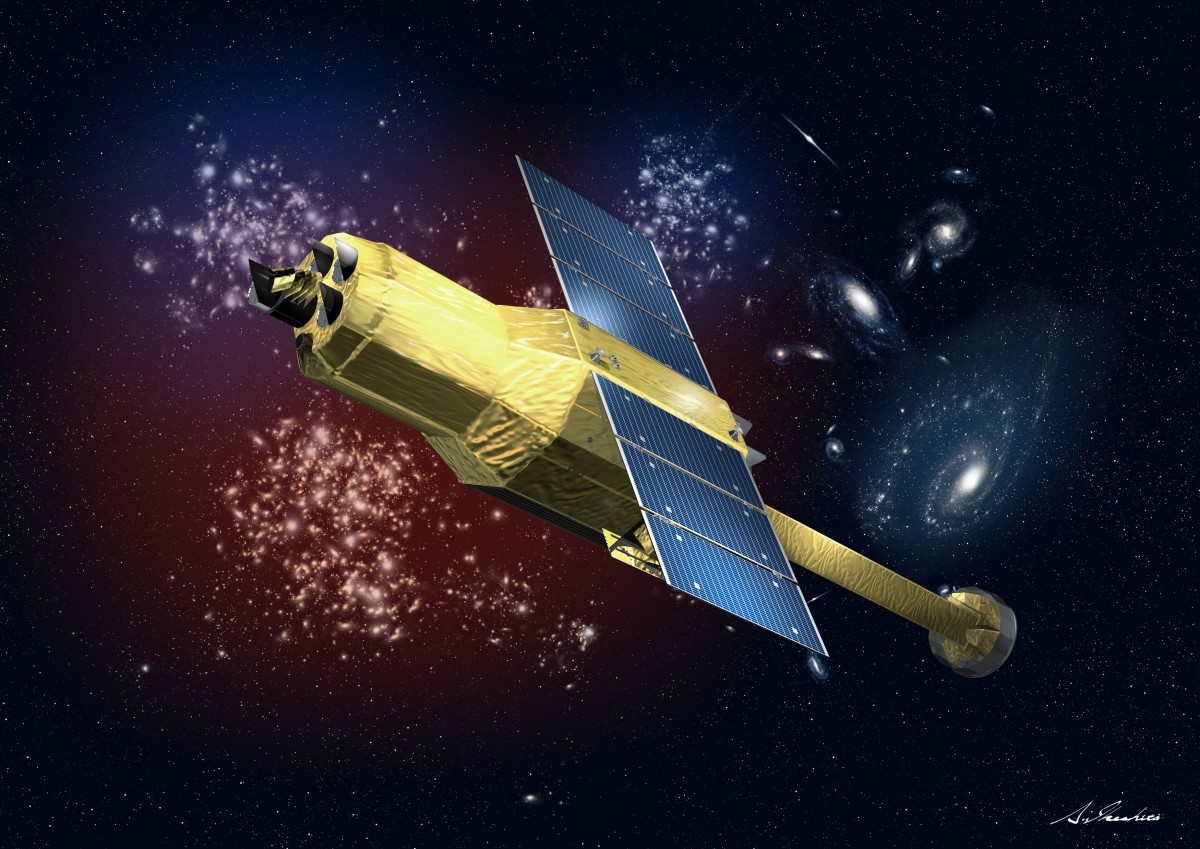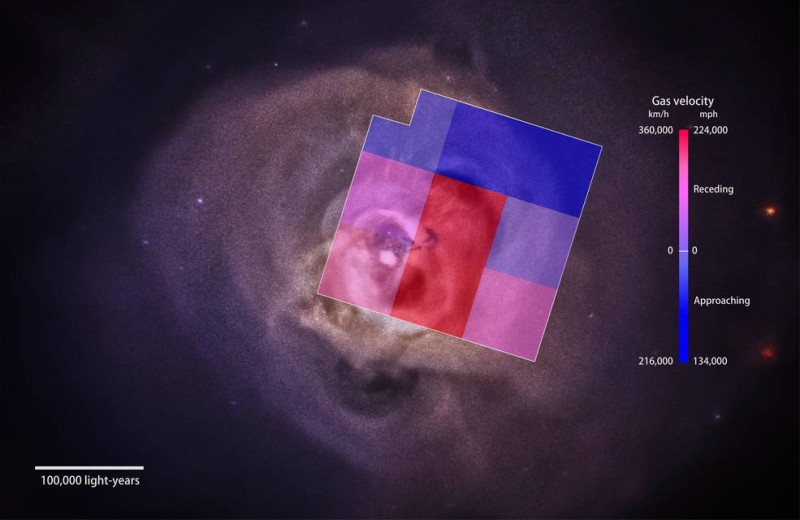
A rendering of the Astronomical Observation Satellites X-ray Astronomy Satellite "Hitomi" (ASTRO-H) // Image: Japanese Aerospace Exploration Agency © Akihiro Ikeshita
Opening new windows into our universe
The first X-ray observation with the recently launched satellite, Hitomi, reveals a remarkably quiescent atmosphere in the Perseus cluster of galaxies powered by supermassive black holes.
The discovery, recently published in the journal Nature, allows the mass of the Perseus Cluster to be calculated more accurately than before. Once this technique can be extended to other clusters, it will allow cosmologists to use them as better probes of our models of the Universe’s evolution from the Big Bang to the present time.
“This first observation was a beautiful illustration of the power of a Soft X-ray Spectrometer (SXS) in space and what it can discover,” said Samar Safi-Harb, Canada Research Chair in Supernova Remnants Astrophysics at the University of Manitoba. Safi-Harb is one of three Canadian astronomers who, along with her international colleagues, defined the science to be accomplished with the launching of Hitomi.

The Perseus galaxy cluster is filled with hot X-ray-emitting gas, as seen in this image from NASA’s Chandra X-ray Observatory. Astronomers using the Soft X-ray Spectrometer aboard the Hitomi satellite have, for the first time, mapped the motion of this gas and determined its velocity structure across a large part of the cluster. The square overlay, which spans about 195,000 light-years at the cluster’s distance, shows the area observed by Hitomi. Colors correspond to the detected gas speeds, with bluer colors indicating faster motion toward Earth and redder colors showing greater velocities in the opposite direction.
Credits: NASA Goddard and NASA/CXC/SAO/E. Bulbul, et al.)
Hitomi (originally known as ASTRO-H) is the sixth in a series of Japanese X-ray observatories. Led by the Japan Aerospace Exploration Agency (JAXA), it is a collaboration of over 60 institutes and 200 scientists and engineers from Japan, the US, Canada, and Europe. The spacecraft was successfully launched on February 17, 2016, from the Tanegashima Space Center in Japan.
Beside membership in the science working group, Canada contributed the Canadian Astro-H Metrology System (CAMS) for Hitomi. CAMS was built by Neptec Design Group, a Canadian spaceflight engineering company in partnership with the Canadian Space Agency (CSA).
“Hitomi targeted the Perseus cluster just a week after it arrived in space,” said Matteo Guainazzi, European Space Agency (ESA) Hitomi Resident Astronomer at the Institute of Space and Astronautical Science, Japan. “Perseus is the brightest X-ray galaxy cluster in the sky. It was therefore the best choice to fully demonstrate the power of the Soft X-ray Spectrometer, an X-ray micro-calorimeter that promised to deliver an unprecedented accuracy in the reconstruction of the energy of the incoming X-ray photons.” Waiting astronomers were not disappointed.
The Hitomi collaboration found that SXS could measure the turbulence in the cluster to a precision of 10 kilometres/second. But it was the absolute velocity of the gas that took them by surprise. It was just 164 ± 10 kilometres/second. The previous best measurement for Perseus was taken with ESA’s XMM-Newton X-ray observatory. Using a different type of spectrometer, it could only constrain the speed to be lower than 500 kilometres/second.
Hitomi’s measurement is therefore much more precise than any similar measurements performed in X-rays so far. “This was the first time that we are able to measure, with an unprecedented sensitivity, the velocity of multi-million degrees gas from an extended object in space, like the Perseus cluster, a cluster of galaxies hosting a highly energetic and active galactic nucleus,” said Samar Safi-Harb.
Safi-Harb added, “The velocity measured to an amazing accuracy by the SXS will allow scientists to better understand how supermassive black holes sitting at the heart of galaxy clusters stir their environment and affect star formation.”
Unfortunately, just a few weeks after the Perseus observation, a malfunction in the attitude control system put Hitomi into an uncontrollable spin that resulted in the break up and loss of the satellite.
“We had plans to study many such hot objects that govern the violent Universe, including, on smaller scales, the remnants of exploded stars – or supernova remnants (SNRs) – that shape both the chemical evolution and dynamics of galaxies.”
“The physics of hot plasma in SNRs is similarly governed by turbulent and fast-moving gas whose velocity and chemical abundances would have been best measured with Hitomi’s Soft X-ray Spectrometer.”
“Looking at this amazing science data is truly bittersweet. Though the mission ended, we’re very pleased and proud of how CAMS performed,” says Dr. Luigi Gallo, a Hitomi team member from Saint Mary’s University and principal investigator of CAMS.
The next currently planned mission that will be capable of following up the Hitomi programme is ESA’s ATHENA, an X-ray observatory scheduled for launch around 2028.
Safi-Harb and her colleagues are keen to get another micro-calorimeter launched. “Seeing the amazing result from Perseus makes it all the harder to swallow the unfortunate loss of the Hitomi mission just 5 weeks after a very successful and beautiful launch. It demonstrates the urgency in getting a micro-calorimeter, such as the one built for Hitomi, up in space.”
“I hope we don’t have to wait until 2028 for ATHENA before we can get another gem like the SXS into space.”
Research at the University of Manitoba is partially supported by funding from the Government of Canada Research Support Fund.






